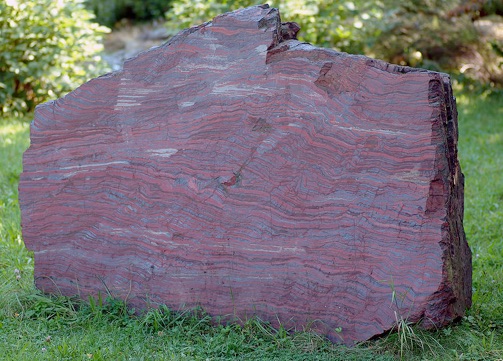5. Evaporites, other Sediments & Sedimentary Facies


1. Lecture Notes:
To print more than 1 slide per page please see your printer set up for details.
Slides with extend notes: HERE - all this material is examinable.
Slides only: HERE
Slides only LARGE file size: HERE
2. Lecture Activity:
Solution: HERE
3. Required Reading:
Gulf Coast Salt Basin & Ochoan Series: page 315 - 318
NOTE: THIS READING IS POTENTIALLY EXAMINABLE.
4. Lecture Goals
Note! Lecture goals are intended to help you understand the main themes in the lecture. They are NOT designed as a guide to the exact content that will appear in exams.
i. List the minerals that may form in evaporite sequences.
-
ii.Describe different environments and conditions of evaporite formation.
-
iii. Describe briefly less common sedimentary deposits.
5. Sample Questions (answers given at the bottom of the page)
Note! These questions are drawn from individual lectures. Questions on the exams may draw their content from ACROSS lecture material and not focus on any one specific area as the questions do here.
-
1.Name this evaporite feature. How and in what environment does this anhydrite form?

http://www.soton.ac.uk/~imw/Durlston-Bay-Lower-Purbeck.htm
-
2.How could a basinal evaporite sequence demonstrate repeated changes between anhydrite and halite deposition?
-
3.The red bands in this rock are rich in iron oxides. The grey / black layers are more chert rich. Name this rock and suggest what was happening in the Earth system that led to its deposition.

http://en.wikipedia.org/wiki/File:Black-band_ironstone_(aka).jpg
1. Chicken wire gypsum - forms in a sabhka due to evaporative pumping of saline ground water precipitating anhydrite in near shore sediments. Nodules become closely packed and the sediment between them restricted to thin stringers
2. Laminated anhydrite / halite
Halite precipitated during LOW periods of reflux (higher salinity), anhydrite during HIGHER periods of reflux (lower salinity)
3. Banded Iron Formation (BIF). Oxygen was being produced by photosynthetic cyanobacteria causing the oxidation of soluble iron in sea water and its precipitation as insoluble iron oxides on the ocean floor in bands. The bands may have been produced during summer months due to higher rates of photosynthesis and oxygen production.
